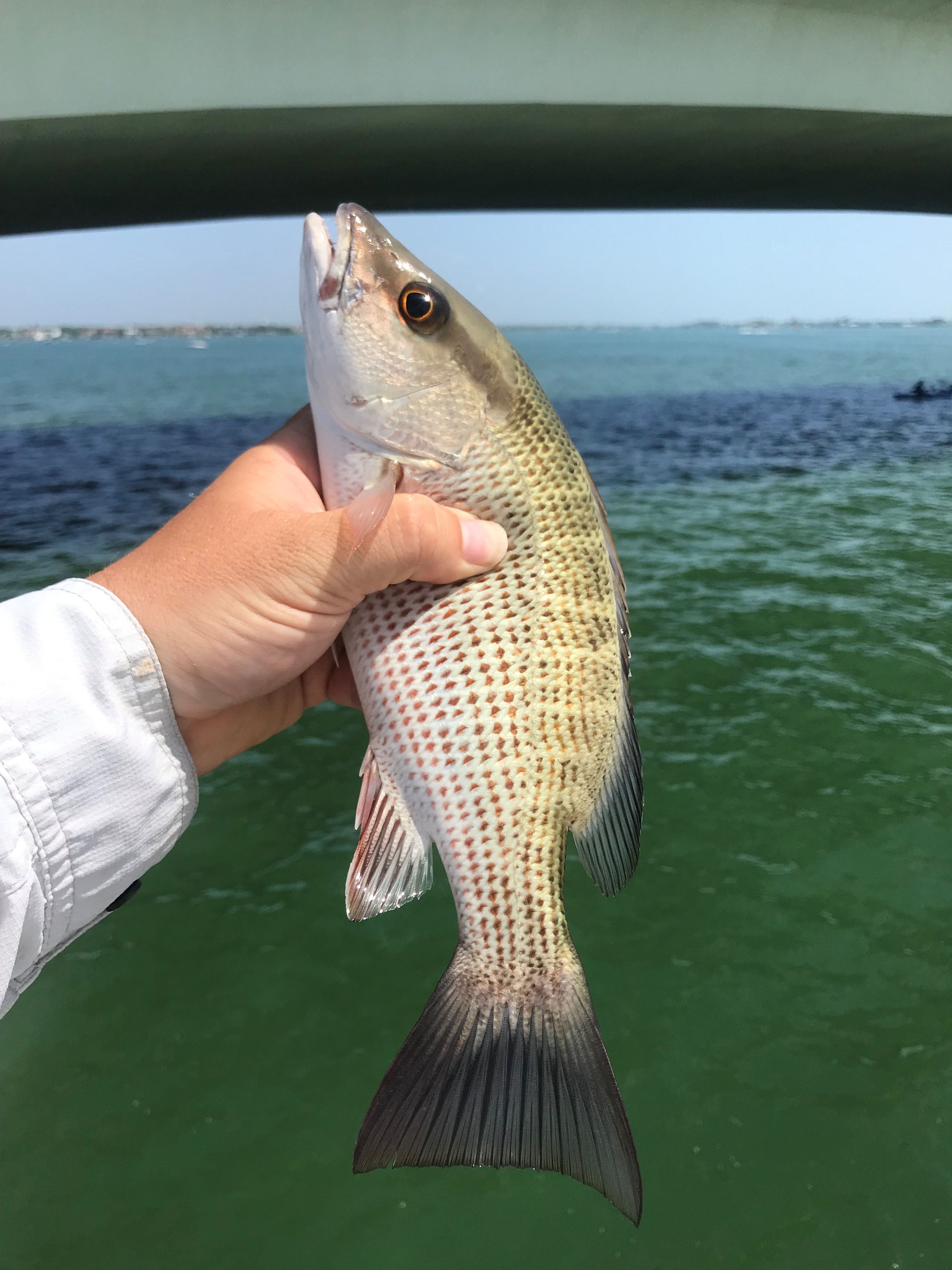
m -2 using trash fish, moist diet, or formulated dry pellet.Cost-benefit analysis showed the feasibility of mangrove red snapper for freshwater aquaculture at a recommended stocking density of 1 to 3 fish Cost analysis showed high net returns for trash fish and formulated pellet fed snappers but low in moist diet feed treatment. FCR in trash fish, moist and dry pellet treatment was 6.4, 6.3, and 2.7, respectively.
#Mangrove red snapper how to#
Region South Catch Ease Easy Habitat Bay, Ocean How to identify a Mangrove Snapper The mangrove snapper has a relatively slender body, a large mouth, and a pointed snout. The survival rate was significantly higher in snappers fed trash fish (93.33%) and dry pellets (94.00%) than fed moist feeds (81.34%). The mangrove snapper is one of the smaller snappers, rarely exceeding 18 inches in length or 10 pounds in weight. Snappers fed with trash fish attained significantly higher mean absolute growth (298.2 g) and SGR (1.81%/day) than those fed moist feeds (232.8 g and 1.61%/day, respectively) and formulated feeds (236.1 g and 1.51%/day, respectively). The feeding experiment study showed that feed types significantly affected weight gain, SGR, and SR (P<0.05). Mangrove Snapper have dark brown or gray with reddish or orange spots in rows along the sides and a dark horizontal band from snout through eye on young. Cost analysis showed high net returns for 1 and 3 fish Survival rate (SR) and feed conversion ratio (FCR) were not statistically different between treatments (P>0.05), which ranged from 78% to 92% and 5.0 to 5.9, respectively. The stocking density (SD) experiment showed significantly higher weight gain, absolute growth and specific growth rate (P0.05). m -2 fed to apparent satiation three times a day for seven months.m -2 reared for six months fed three times a day with trash fish to apparent satiation and (b) comparing feed types: (1) trash fish (2) moist diet and (3) formulated dry pellet at a stocking density of 1 fish.They are easy to catch, which makes fishing for them ideal for beginner anglers. They can be found year around and are often found in the mangroves, and around docks or other structures. Mangrove red snapper (Lutjanus Argentimaculatus) captrive underwater with two fisherman on bank looking down into water, Hainan Island, South China Sea. This study evaluated the growth and cost efficiency of the species in a freshwater pond in two experiments with three replications: (a) comparing stocking densities: (1) 0.5 (2) 1 and (3) 3 fish fish Mangrove snapper are common targets for anglers, and are highly prized for their light and flaky flesh.


Jing-Bin Feng1,2,3, Peng Luo1, Jun-De Dong1,2.

(Lutjanus argentimaculatus Forsskl, 1775) reared in sea cages. The mangrove red snapper Lutjanus argentimaculatus (Forsskål 1775) is a high value, euryhaline marine fish with potential as a species for freshwater aquaculture. Intestinal microbiota of mangrove red snapper.


 0 kommentar(er)
0 kommentar(er)
